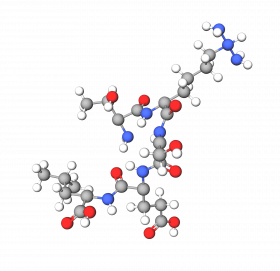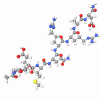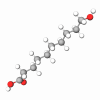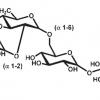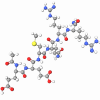Royal jelly is a mixture containing proteins, sugars, fatty acids, and B vitamins as well as antibacterial and antibiotic agents. In 2011, Japanese scientists discovered that royal jelly's effect on the evolution of bee larvae was due to a protein called Royalactin.
Royalactin interacts with epidermal growth factor (EGF) receptors and other signaling pathways. EGF receptor activation promotes tissue regeneration. With age, EGF activity in the skin decreases, and wound healing ability declines. Royalactin improves turnover through proteasome activation (regeneration of damaged proteins) and protein neo-synthesis.
Royalactin cannot penetrate the skin because its molecule is too large and it is unstable and degrades very quickly. Mibelle Biochemistry has developed a peptide that repeats the sequence of an active site of Royalactin.
RoyalEpigen P5 is a peptide-based complex that contains 5 amino acids peptide (Pentapeptide-48) based on arginine and matching a highly conserved domain (a domain shared by different ligands to the EGF receptor, such as human growth factors such as EGF and TGF-α). Active peptide is encapsulated with a soft spherical carrier system using shea butter that improves skin penetration and uptake by keratinocytes. Thanks to this delivery system, the peptide is protected from degradation in the formulation and release in a controlled way.